Ancient Scandinavians Never Spoke Of Themselves As Vikings – Here Is Why
Ellen Lloyd - AncientPages.com - If Vikings were alive today, they would be surprised and perhaps even a little flattered to see how the world has taken an interest in their history. The Vikings are more popular than ever, and people are fascinated with everything these Norse warriors accomplished, and even failures in some cases.
When we talk about the Vikings, we say they were originally from Scandinavia, which, of course is true. However, did you know that very few people in ancient Scandinavia spoke of themselves as Vikings?
Being a Viking was a profession. Credit: Nejron Photo - Adobe Stock
The origin of the word Viking is still uncertain, and it would seem the "word is a historians' revival; it was not used in Middle English, but it was reintroduced from Old Norse vikingr "freebooter, sea-rover, pirate, viking," which usually is explained as meaning properly "one who came from the fjords," from vik "creek, inlet, small bay." 1
To understand why ancient Scandinavians did not refer to themselves as Vikings, one must remember the meaning of the word Viking. In Old Norse, an old Scandinavian language, the word appears as "vikingr", which designates a person, while "viking" designates a practice.
According to Jan Bill, a professor of Viking archaeology and curator of Oslo's Viking Ship Museum, "the Scandinavians never spoke of themselves as Vikings, as an identity for anybody Scandinavian. The word rather meant an activity, to go raiding or a person who was doing that."
In modern times, we forget the true meaning of this word. We frequently use the word 'Viking' to describe anybody Scandinavian from the Viking period.
As much as historians try to set the records straight, many great Viking misconceptions are still perpetuated.
Contrary to what many believe today, the Vikings did not wear helmets with horns or drink from skull cups. Very few helmets from the Viking Age have been unearthed, but one thing is certain: none of the discovered ones had horns.
The horns on the Viking helmet were simply a "mistake" is attributed to costume designer Carl Emil Doepler, who in 1876 added horns to the warriors' helmets in a performance of Richard Wagner's Ring Cycle opera, inspired by Nordic mythology." 2
It's often said that Vikings were dirty and did not pay attention to their appearance. Few things can be further from the truth. Archaeological discoveries reveal that Vikings were cleaner than most and they were rather vain.
Vikings did plunder and used their magnificent longships to reach distant lands. The Vikings' ships were the greatest technical and artistic achievement of the European Dark Ages. Without these great ships, the Viking Age would never have happened.
Many Viking ships were equipped with carved dragonheads on top of the stem, while the stern was often shaped like a dragon's tail. The dragon was meant to frighten the enemy, and it was a powerful Viking symbol.
"The word "drakkar" is sometimes purported to be a Viking-era word for a longship, which occasionally featured an ornamental dragon on the bow.
But some historians insist that the term is as recent as the 19th century, inspired by the modern Swedish word for dragon, "drake" in singular and "drakar" in plural.
That word is similar, but not exactly the same, as the word used in Old Norse.
"There are actually seven instances of ships being called 'dreki', or 'drekar' in plural, in poems from the Viking Age," says Jan Bill.
"It was not a technical term, though, rather poetic."
A Viking warrior. Credit: Fotokvadrat - Adobe Stock
Historians do, however, agree that light longships, powered by oars and/or sails, were known for their speed and flexibility, capable of crossing oceans and, thanks to their shallow draught, sailing upriver. 2
As much as the Vikings are today remembered for plundering, we must not forget that they were also skillful traders who established a network of contacts from the Caspian Sea to Greenland.
During the Viking Age, organizing and financing trading possibilities was necessary. This was done through something known as Félag, best described as an ancient Viking company.
Commerce played a vital role in the lives of Vikings, who established several important trading centers that many foreigners visited.
One of them was Kaupang, a flouring Viking market and production center for North Sea trade.
Although it was not as effective as its two Nordic "sister cities," Birka in Sweden and Hedeby in southern Jutland (now Schleswig, Germany), Kaupang was a well-known and extremely effective hub for trade and production, a few decades into the 900s.
Ancient Arabic coins and other discovered artifacts reveal Vikings traded with people from distant lands.
To an ordinary person in ancient Scandinavia, Vikings' life must have been rather exotic. Being a simple farmer, baker, or perhaps a blacksmith, it was difficult for an individual in ancient Scandinavia to compare himself with a Viking because being a Viking was a profession he did not share.
This is why ancient Scandinavians never spoke of themselves as Vikings.
Updated on January 21, 2024
Written by Ellen Lloyd – AncientPages.com
Copyright © AncientPages.com All rights reserved. This material may not be published, broadcast, rewritten or redistributed in whole or part without the express written permission of AncientPages.com
Expand for referencesMore From Ancient Pages
-
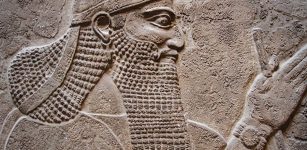 Unexpected Discovery Of 600 B.C Assyrian Palace In Shrine Destroyed By Isil Militants
Archaeology | Mar 2, 2017
Unexpected Discovery Of 600 B.C Assyrian Palace In Shrine Destroyed By Isil Militants
Archaeology | Mar 2, 2017 -
 2,000 Years Ago Mysterious Foreigner With Unique Ancestry Traveled To Cambridgeshire – Who Was He?
Archaeology | Dec 27, 2023
2,000 Years Ago Mysterious Foreigner With Unique Ancestry Traveled To Cambridgeshire – Who Was He?
Archaeology | Dec 27, 2023 -
 Fascinating Ancient History Of Roman Shields
Featured Stories | Oct 1, 2018
Fascinating Ancient History Of Roman Shields
Featured Stories | Oct 1, 2018 -
 Sacred Helgafell Mountain And The Story Of Torolv Mostrarskjegg
Featured Stories | Mar 13, 2024
Sacred Helgafell Mountain And The Story Of Torolv Mostrarskjegg
Featured Stories | Mar 13, 2024 -
 Stone Tools Reflect Three Waves Of Migration Of The Earliest Homo Sapiens Into Europe
Archaeology | May 4, 2023
Stone Tools Reflect Three Waves Of Migration Of The Earliest Homo Sapiens Into Europe
Archaeology | May 4, 2023 -
 The Oldest Denisovan Fossils Ever Discovered Shed New Light On Early Hominins As They Spread Across Eurasia
Archaeology | Nov 30, 2021
The Oldest Denisovan Fossils Ever Discovered Shed New Light On Early Hominins As They Spread Across Eurasia
Archaeology | Nov 30, 2021 -
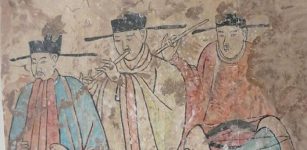 Ancient Fresco Tomb Dated A 1000-Years Ago Was Accidentally Discovered In Northern China
Archaeology | May 5, 2020
Ancient Fresco Tomb Dated A 1000-Years Ago Was Accidentally Discovered In Northern China
Archaeology | May 5, 2020 -
 Mysterious Ancient Mass Grave With Roman Skeletons Baffles Archaeologists
Archaeology | Sep 25, 2017
Mysterious Ancient Mass Grave With Roman Skeletons Baffles Archaeologists
Archaeology | Sep 25, 2017 -
 Incredible Trove Of 100,000 Ancient Coins Tied Together In Bundles Uncovered In Japan
Archaeology | Nov 13, 2023
Incredible Trove Of 100,000 Ancient Coins Tied Together In Bundles Uncovered In Japan
Archaeology | Nov 13, 2023 -
 Sacred Bird Garuda And Stealing Of Amrita Drink Of Immortality From The Gods
Featured Stories | Jun 5, 2019
Sacred Bird Garuda And Stealing Of Amrita Drink Of Immortality From The Gods
Featured Stories | Jun 5, 2019 -
 Sacred Number Four – Perfect Number And Deep Meaning Behind It
Ancient Symbols | Nov 7, 2017
Sacred Number Four – Perfect Number And Deep Meaning Behind It
Ancient Symbols | Nov 7, 2017 -
 Skidi Pawnee Were Advanced Astronomers Who Charted The Night Sky And Kept Track Of Time
Archaeoastronomy | Jan 11, 2018
Skidi Pawnee Were Advanced Astronomers Who Charted The Night Sky And Kept Track Of Time
Archaeoastronomy | Jan 11, 2018 -
 Spectacular Giant Bronze Age Hall Found Near Berlin, Germany May Be Connected To Legendary King Hinz
Archaeology | Nov 6, 2023
Spectacular Giant Bronze Age Hall Found Near Berlin, Germany May Be Connected To Legendary King Hinz
Archaeology | Nov 6, 2023 -
 Mystery Of The Wizard Clip – Unexplained Half-Moon Clippings And Supernatural Phenomena West Virginia
Featured Stories | Dec 14, 2020
Mystery Of The Wizard Clip – Unexplained Half-Moon Clippings And Supernatural Phenomena West Virginia
Featured Stories | Dec 14, 2020 -
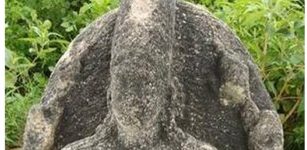 8th Century Sculpture Of Lord Vishnu Belonging To Pandya Dynasty – Unearthed
Archaeology | Sep 16, 2020
8th Century Sculpture Of Lord Vishnu Belonging To Pandya Dynasty – Unearthed
Archaeology | Sep 16, 2020 -
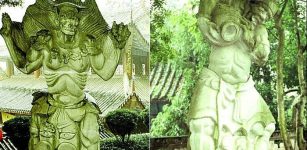 Spectacular Fengdu Ghost City Devoted To Afterlife
Chinese Mythology | Aug 22, 2016
Spectacular Fengdu Ghost City Devoted To Afterlife
Chinese Mythology | Aug 22, 2016 -
 Is A Gigantic Ancient City Hidden Underwater In The Bermuda Triangle?
Featured Stories | Jul 8, 2014
Is A Gigantic Ancient City Hidden Underwater In The Bermuda Triangle?
Featured Stories | Jul 8, 2014 -
 Bizarre Story Of Scottish Penkaet Castle
Featured Stories | Apr 18, 2020
Bizarre Story Of Scottish Penkaet Castle
Featured Stories | Apr 18, 2020 -
 Lao Tzu: Legendary Thinker And Founder Of Taoism Who Advocated Modesty, Self-Restraint And Balance
Chinese Mythology | Jul 13, 2019
Lao Tzu: Legendary Thinker And Founder Of Taoism Who Advocated Modesty, Self-Restraint And Balance
Chinese Mythology | Jul 13, 2019 -
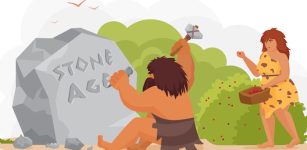 Study Reveals Average Age That Women And Men Had Children Over Past 250,000 Years
DNA | Jan 10, 2023
Study Reveals Average Age That Women And Men Had Children Over Past 250,000 Years
DNA | Jan 10, 2023


